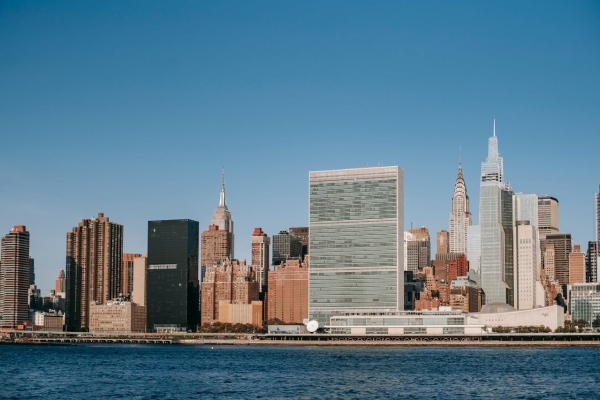The much-anticipated Summit of the Future took place on September 22 and 24, 2024, at the United Nations headquarters in New York, preceded by two Action Days dedicated to discussions, debates, and side-events. International leaders, diplomatic bodies, representatives of international organizations, and young activists gathered to debate issues that urgently require action today and to establish an action plan for the future. These moments of multilateral dialogue culminated in the adoption of the so-called Pact for the Future – which is much more than a simple document, but rather a declaration by the parties who adopted it to implement long-term changes and behaviors to protect and safeguard the planet and humanity.
In an increasingly worrying international context, with the rapid escalation of countless international conflicts or instability caused by non-state actors, the worsening of diseases and food insecurity, along with the development of innovative destructive weapons, the future of civilians in such situations is becoming more uncertain. The destructive effects of explosive weapons are rising rapidly, as shown by the AOAV (Action On Armed Violence) databases, whose projections are expected to increase due to escalating tensions in unstable regions such as the Middle East, Sub-Saharan Africa, and Ukraine.
The Pact for the Future is, therefore, a comprehensive product aimed at reinforcing the interest and commitment of states and supranational bodies in all aspects concerning humanity's future – from sustainable development and youth engagement to the digital sphere and, most importantly, the security landscape. Specifically, in this latter section, the adopted text emphasizes the priority of building a more stable future with peaceful societies that respect international and humanitarian law. Additionally, it highlights the urgent need to tackle and eliminate the root causes of conflicts to ensure political, socio-economic stability, and psychological and physical well-being for civilians. Furthermore, there is a reiterated common interest in pursuing disarmament and non-proliferation goals to contain the threat and damage that such sophisticated weapons of mass destruction can cause to innocent victims.
As a result of the Summit of the Future, parties currently deploying explosive weapons are urged to cease such actions, reminding them and the entire international community to refrain from any actions contrary to the “Political declaration on strengthening the protection of civilians from the humanitarian consequences of explosive weapons arising from the use of explosive weapons in populated areas” (WIPA). Therefore, the adoption of diplomatic dialogue and the use of multilateralism are encouraged to find a solution to the alarming geopolitical issues, thus halting the repeated use of explosive weapons in cities, civilian infrastructure, or any other densely populated areas.
Action 14 primarily becomes the voice of civilian victims of armed conflicts. The global community condemns the disproportionate impact of armed violence, especially on vulnerable groups such as women, children, the elderly, and people with disabilities, as well as the significant burden it places on civilian infrastructure and food supplies. Action 26 also deserves particular attention, as it advances the intentions of UN members to promote lasting and peaceful disarmament.
The United Nations, through its Permanent Conference on Disarmament, serves as a pioneer in ensuring that mechanisms in line with international non-proliferation treaties are respected and that measures to control explosive weapons in the hands of non-state actors are further implemented.
To read more, please visit:
- https://www.inew.org/protection-of-civilians-from-explosive-weapons-at-summit-of-the-future/
- https://www.un.org/sites/un2.un.org/files/sotf-the-pact-for-the-future.pdf
- https://webtv.un.org/en/asset/k1k/k1kr6jbp19
- https://aoav.org.uk/explosiveviolence/
- https://www.un.org/sites/un2.un.org/files/our-common-agenda-summit-of-the-future-what-would-it-deliver.pdf
- https://sdg.iisd.org/events/summit-of-the-future/
- https://ewipa.org/







